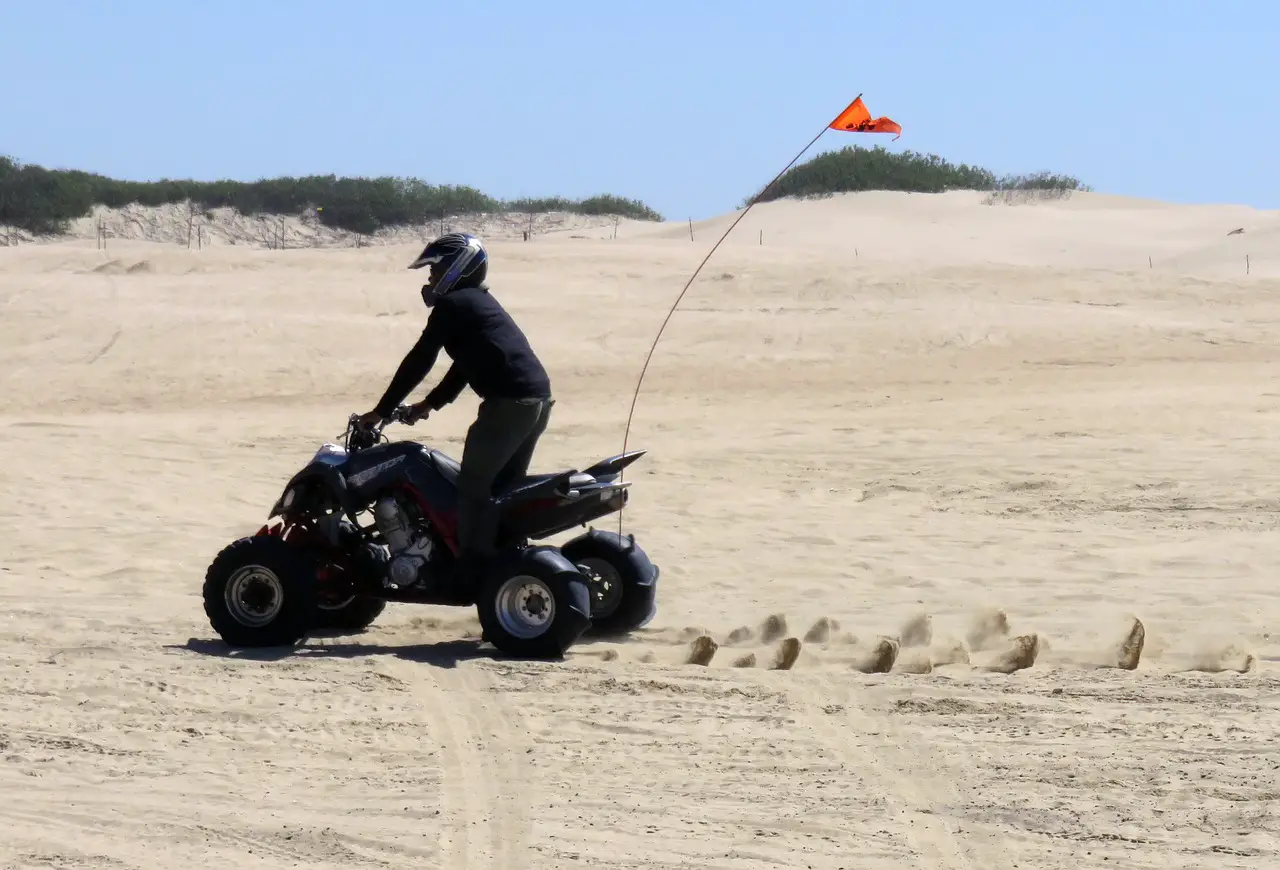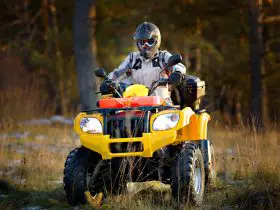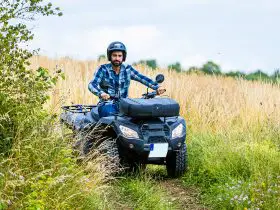Sand dune riding is a fun and adrenaline-filled experience for off-road enthusiasts. However, its soft and ever-changing landscape can create hazardous conditions for riders. Riders need to take extra precautions to prepare their ATV, learn about the dunes, become knowledgeable about techniques, and take other safety measures.
Before you hit the dunes on your next adventure, it’s important to be aware of these things. Whether you’re a beginner or a pro, read on to learn more about these ATV sand dune riding tips!
Table of Contents
1. Prepare Your ATV
Preparation of your ATV is one of the most essential aspects of a great sand dune riding experience. These conditions can be harsh on your vehicle and you want to be sure to protect it the best you can.
Give your vehicle an oil change. Your engine will be working extra hard in this environment. This will ensure that the engine can withstand higher temperatures and more rotations per minute.
Clean airflow is super vital to an engine’s performance. Keeping sand out of your system is your responsibility. Therefore, you’ll need to change or clean your air filter. You may also look to purchase an air filter kit for extra protection.
Paddle tires can help you find more traction in this environment so you might consider throwing some on your machine. There’s a variety of types to consider like straight-cup or V-cup tires. If you don’t want to spend the cash, you can try running your sport tires on the lowest tire pressure.
A whip flag is another addition that is helpful to install before heading out. This will help others see you.
2. Machine Weight
Another point to make in terms of preparation is the weight of your ATV. The Yamaha Banshee 350 is a legend when it comes to riding the dunes. This is because it has a low dry weight making it easier to maneuver in the sand. In addition, the higher horsepower comes in handy for getting the right speed and momentum.
There are plenty of great models out there for sand dune riding. While the Banshee has since been discontinued for a while, the Yamaha YFZ 450 is a newer option that many are reaching for.
3. Read the Dunes
The easiest way to navigate a dune is to ride at an angle. Furthermore, you should be scoping out your routes before you even attempt to ride a dune. Don’t forget that conditions can change fast. Therefore, you’ll need to be ready for anything.
Reading the dunes is a skill that can help you get the best ride possible. This not only ensures your safety but also allows you to find the funniest routes.
The people who are most successful in riding dunes are those who are looking to the dunes ahead and picking out the most appealing lines. These allow for the best transitions. However, looking for the smoothest lines will sometimes require you to drop into a deeper bowl or into a steep transition.
4. Spotting A “Witch’s Eye”
There are plenty of things you need to look out for when dune riding. Two of the most hazardous things include drop-offs and something called a “witch’s eye.”
A witch’s eye is a deep hole that has formed in the sand. They vary widely in size. Most of the time they are at the backside of a dune and are very hard to see.
This is also why you should never ride straight up a dune. Instead, ride at an angle so that you can see oncoming riders and other obstacles such as a witch’s eye.
5. Reverse When Stuck
In the unfortunate event that you get stuck, don’t try to rev the engine in an attempt to get out of it quickly. It can be tempting to try this but you’ll usually only dig yourself deeper.
The best way to get out of a tricky situation like this is to reverse it. When you reverse onto the well-packed sand behind you, you might have more luck of gaining some traction.
6. Speed and Momentum
From what has been previously mentioned, you can probably gather that speed and momentum are incredibly important aspects of ATV sand dune riding. The bigger the hill, the more momentum that you’ll need to conquer it. Remember to keep your momentum strong and your quad moving to avoid getting stuck often.
When speed is mentioned, don’t take it as you need to be pushing the pedal to the metal constantly. In that case, you’d find yourself launching off the peaks blindly. Find the right rhythm so that you don’t get bogged down in the sand but can operate at a safe pace for yourself and others.
7. Transitions
A dune is normally pretty steep on one side and smoothed out on the other. Again, conditions can change quickly. When transitioning, you should try to hit the peak at about a 45-degree angle. This lessens the jolt when you come back down from crossing.
There are transitions known as razorbacked transitions. These are wind-swept ledges that are steep and often winding. They can be super intimidating to many. It’s best to start on smaller razorbacks to ensure that you are building up confidence and skill.
8. Hill Climbing
Testing your motor’s capabilities is another fun aspect of duning. No matter how much horsepower you have, you can still try to climb those hills. Remember to look for those smooth lines at the bottom of the hill and the longest route to the top.
If you’re using something with a manual clutch, this can come in handy. Start in a higher gear than necessary and drop the clutch hard. Make sure you’re giving it a hefty amount of throttle.
9. Turning Around or Jumping Off
There are a couple of things to keep in mind if you feel like things are going south. For one, if you feel that you aren’t going to be able to make it to the top of the dune: turn around. It’s better to come back down and try again than get stuck.
When things are going really bad, don’t be scared to jump off your machine. You are safer hitting the sand than getting rolled up with your ATV. If you do decide to jump off, do so towards the higher ground and turn your tires toward the lower ground. You’ll be able to climb back on and go again instead of potentially getting hurt.
10. Ride In Groups
It’s always best practice to ride in groups. If you can’t find a group then at least bring one other person. Some of the best dunes in the United States are remote locations. That means it can be easy for you to get stranded or lost.
Let others know about what your plans are as well. Riding with others helps you all ensure the safety and fun of your trip. Having a buddy is also helpful in terms of using a spotter. The spotter can look out for your landing and be sure that you don’t run into others.
11. Bringing the Right Equipment
There are certain items that you’ll need to bring on your adventure. Some of those things include a first aid kit, shovel, wench, tow straps, tool kit, tire repair kit, and water.
Water is a top priority when it comes to riding an ATV in the sand dunes. The heat, sun, and sand can dry you out quickly. Be sure that you are staying hydrated to avoid any accidents.
12. Always Wear a Helmet and Goggles
You should always be taking these precautions to protect yourself when riding an ATV. Accidents happen far too often and you could get very hurt by putting not wearing a helmet.
Tinted goggles are highly important when riding sand dunes. These keep your eyes safe from sand and sun. Both of these have the potential to permanently damage your eyes. You’ll need to be alert to your surroundings when it comes to riding the sand dunes. Look out for other riders, drop-off, and witch’s eyes.
ATV Sand Dune Riding Tips For Success
These ATV sand dune riding tips are just a small glimpse into creating a safe environment for you and others. Not only does this mean safety but it ensures fun as well. As you become a more experienced rider, many of these things will be like second nature to you. However, in the meantime: operate with extra care.
There are many other things that you should be aware of when sand dune riding. This is just a scratch on the surface. So, be sure to continuously educate yourself.
If you’re looking for the right ATV for your adventures, read our guide on the best ATV brands.










